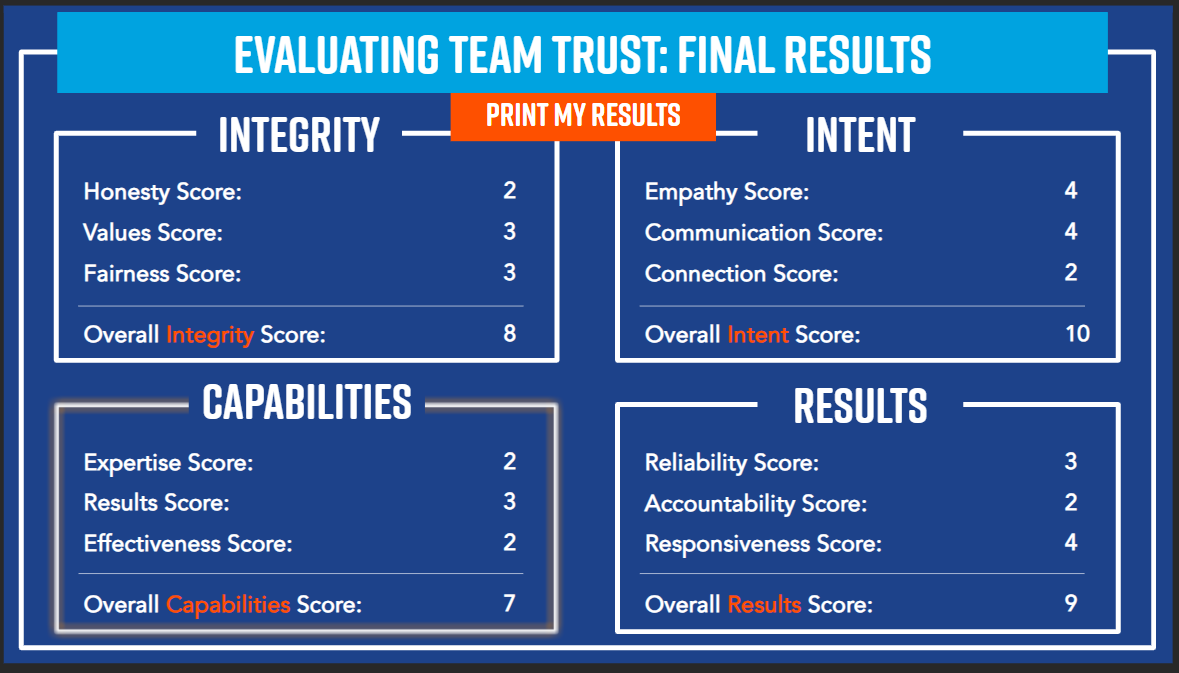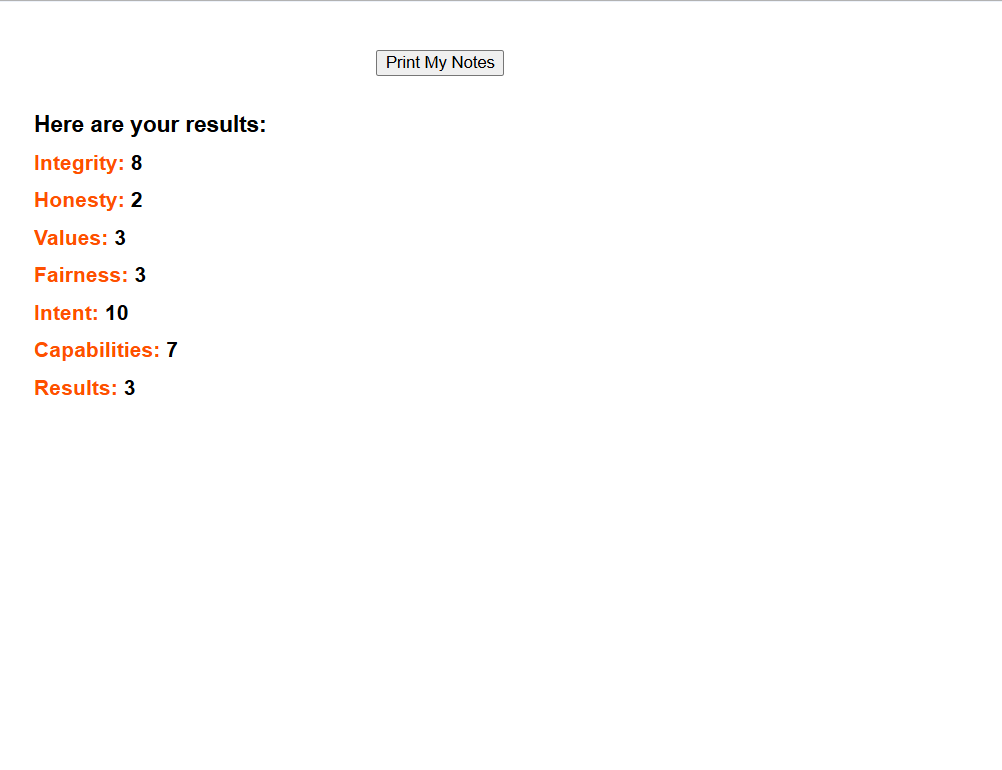Storyline Sample:
Leadership Trust Building Survey -
Leaders in the company were looking for professional development options, so the ID department was tasked with creating monthly leadership trainings for managers.
For this month, the topic was Building Trust and becoming a "high-trust" leader. Before the session, learners needed to identify what level of trust was currently present in the team, and what type of behaviors were having both a positive or negative effect.
I designed and developed this survey to help managers and department leaders evaluate the level of trust on their team and identify their weakest area of trust.
-
Designer and Developer
-
Adapt the survey from a basic team functionality template, and design the questions to support the objectives.
Develop the survey in Storyline 360 to optimize use for learners
Include triggers that allow the learner to identify their lowest score
Include triggers that allow the learner to print out survey results
Publish the SCORM package to the LMS
-
Establish a baseline for team or departmental daily performance and trust levels by implementing a structured assessment tool, aiming for an increase in overall team efficiency and a measurable improvement in trust indicators within the next quarter.
-
Objectives of the overall Building Trust Workshop:
Define the 13 characteristics of a high-trust leader.
Differentiate between correct and counterfeit behaviors for each of the 13 characteristics.
Correct counterfeit behaviors and practice using correct behaviors in a dialogue.
Create goals to reduce counterfeit behaviors and inspire trust.
my processI was tasked with adapting a generic leadership survey into an interactive activity for workshop participants.
Participants were instructed to complete the survey in Storyline360 before the workshop session, so they could bring their results to discuss.
I designed template slides in Storyline and added each question to the slides. To make the activity more learner-centric, I included a quick tutorial, explaining how to complete the survey.
Finally, I added triggers to the file that would calculate the learner’s lowest section score in the survey and highlight it at the end.
The participants needed to be able to print out their survey results, and I could have easily built the file to simply provide a print screen of the final slide.
However, I wanted to push myself and make the printed results more clear and easy to digest. To do this, I included a JavaScript trigger that allowed the results to be printed in a neatly organized PDF format.




